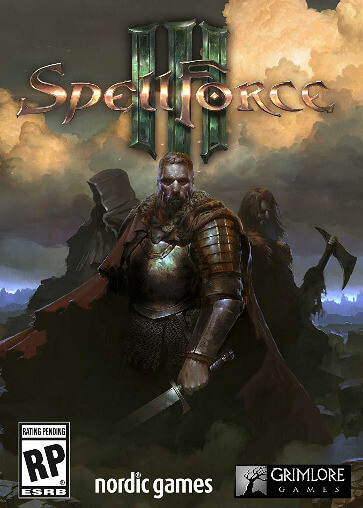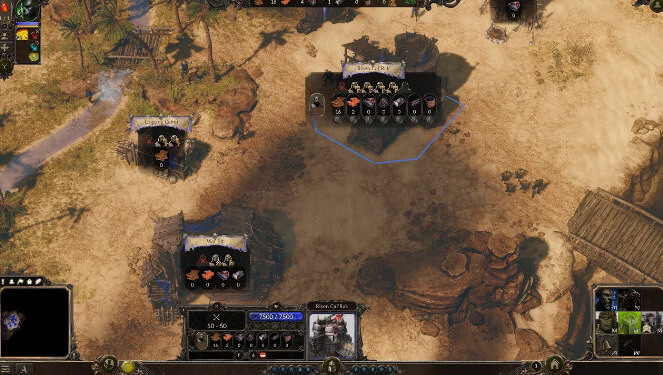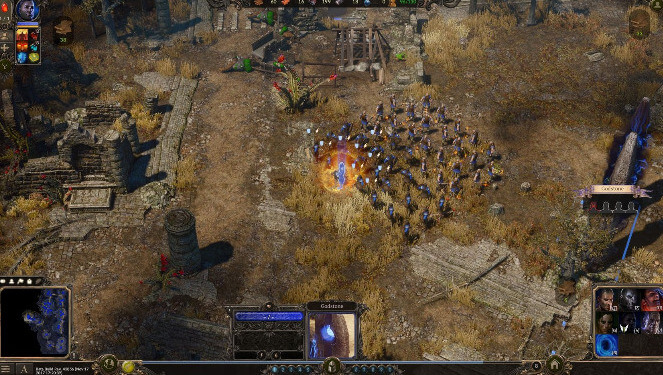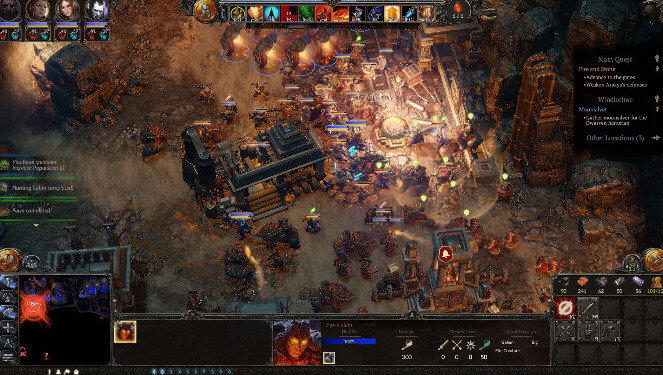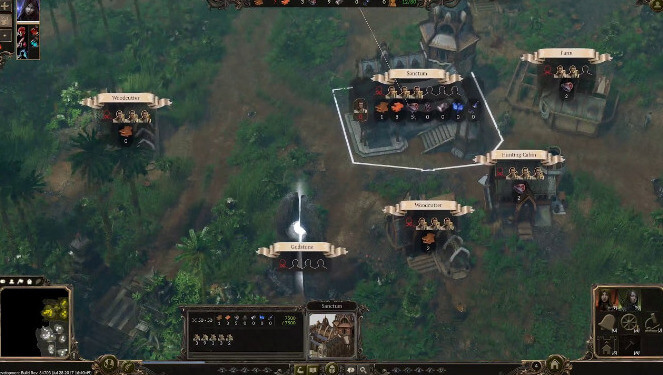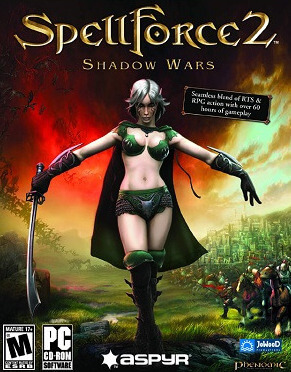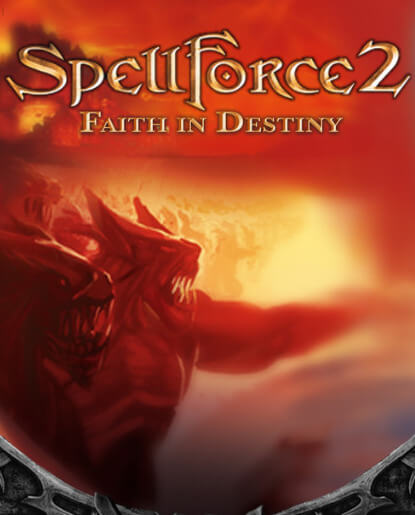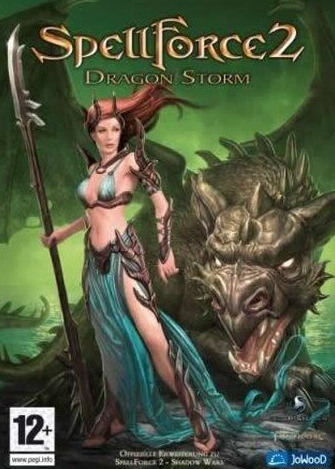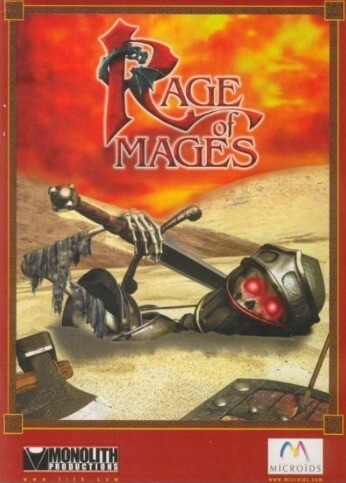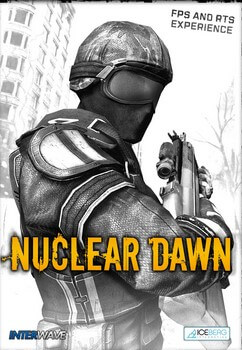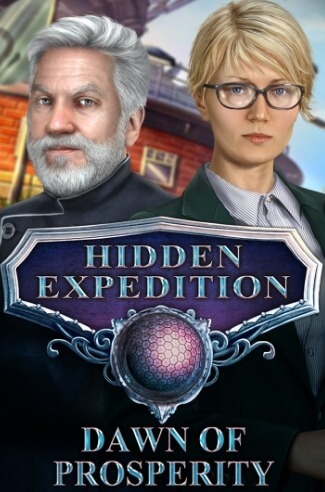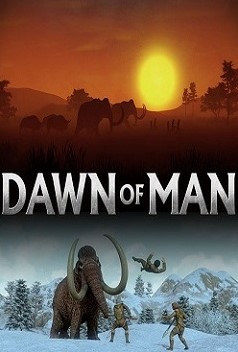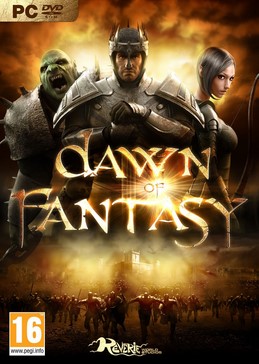The game features a story-driven campaign and a skirmish mode which allows players to fight battles on the game's maps without previously playing through the campaign mode. Both modes can be played alone or with other players online. In skirmish mode, players can share responsibilities of managing a single race with others.
Players can create their own character in campaign mode, customizing appearance and gender. They can also choose three different skill trees, depending on the chosen fighting style. All player-created characters have a fourth skill tree called "Leadership" which contains skills related to the real-time strategy parts of the game. Each character has five attributes (strength, dexterity, intelligence, willpower and constitution) which influence what weapons, armor and items they can use as well their health, focus, damage, block and critical strike chances. During the campaign, a number of other characters (companions) can be recruited . All characters gain experience points by killing enemies and completing quests, regardless of whether they were involved in combat or the quest. Experience points allow players to unlock improvements for their character and companions, such as learning new skills, improving attributes and unlocking advanced equipment.
The game uses an isometric perspective that players can rotate to display the environment. Depending on the map, players control a single character or a group. The mouse, along with hotkeys, can be used for actions such as selecting enemies to attack or skills to use. Alternatively, selecting an enemy and holding a certain key will slow down the game and shows a wheel of possible skills to use on the unit. The skill-wheel was added for the first time in the SpellForce series in SpellForce 3 and allows players to quickly select and perform an action.
Both the main character and companions have magical talents ("skills") which come in three forms: spells, auras and passive. Spells must be activated and sometimes targeted. They allow players to focus a positive or negative effect, e.g. healing a group of friendly units or damaging a certain enemy. Auras have a positive effect on nearby friendly units or a negative effect on nearby enemy units. Passive skills improve a character's abilities directly, such as increasing damage dealt with a certain weapon or heightened health regeneration. Skills are grouped into "skill trees", requiring players to unlock certain skills first before others. All skills can be upgraded once or twice, with the base skill of each tree having eight possible upgrades. Each companion has a special powerful skill that can only be unlocked by completing a side quest. Spells and auras must be "equipped" before they can be used in battle. Players are limited to three spells and/or auras, and must strategically choose which spells or auras to equip. Skills are depicted as pictograms below each character's portrait in the upper left corner of the screen and can be accessed by clicking on them. The game displays potions and equipped items in a slot next to the skills slot.
The game features a World Map from which players can travel to certain locations. When entering a map, the player can choose which companions to accompany them, which influences some quests. Up to three companions can be selected, although sometimes a map requires a certain companion to play. On each map, several "Godstones" allow the player's units to teleport and to revive the player character and companions.
Maps that allow the player to control an army are separated into sectors. The main character or a companion are required to create outposts to expand their territory. This concept was made popular in Z. Resources are limited in each sector and transported by automatic horse carriages between several sectors. The carriages can be attacked by enemies. Unlike in most real-time strategy games, workers are limited in each sector and cannot be controlled directly; instead, they are assigned to a building. Controlled sectors must be next to each other, otherwise resources will not be shared. Because the number of workers is limited for each sector and the number and level of outposts also determines the number of units the player can make, expansion is required to build, harvest resources and create more units. All army units have strengths and weaknesses, meaning they are stronger when fighting certain enemies and more susceptible to damage from others.
Players can choose a race to control when entering a map with real-time strategy elements. There are three races to choose from: elves, humans and orcs, down from six in the first game and nine (bundled in three factions) in the second game. Elves favor defense, including strong buildings and outposts that can defend themselves. Orcs favor fast expansion and brute force. Humans favor defense and offense equally. Advanced units and buildings require the player to find blueprints or buy them from merchants.
